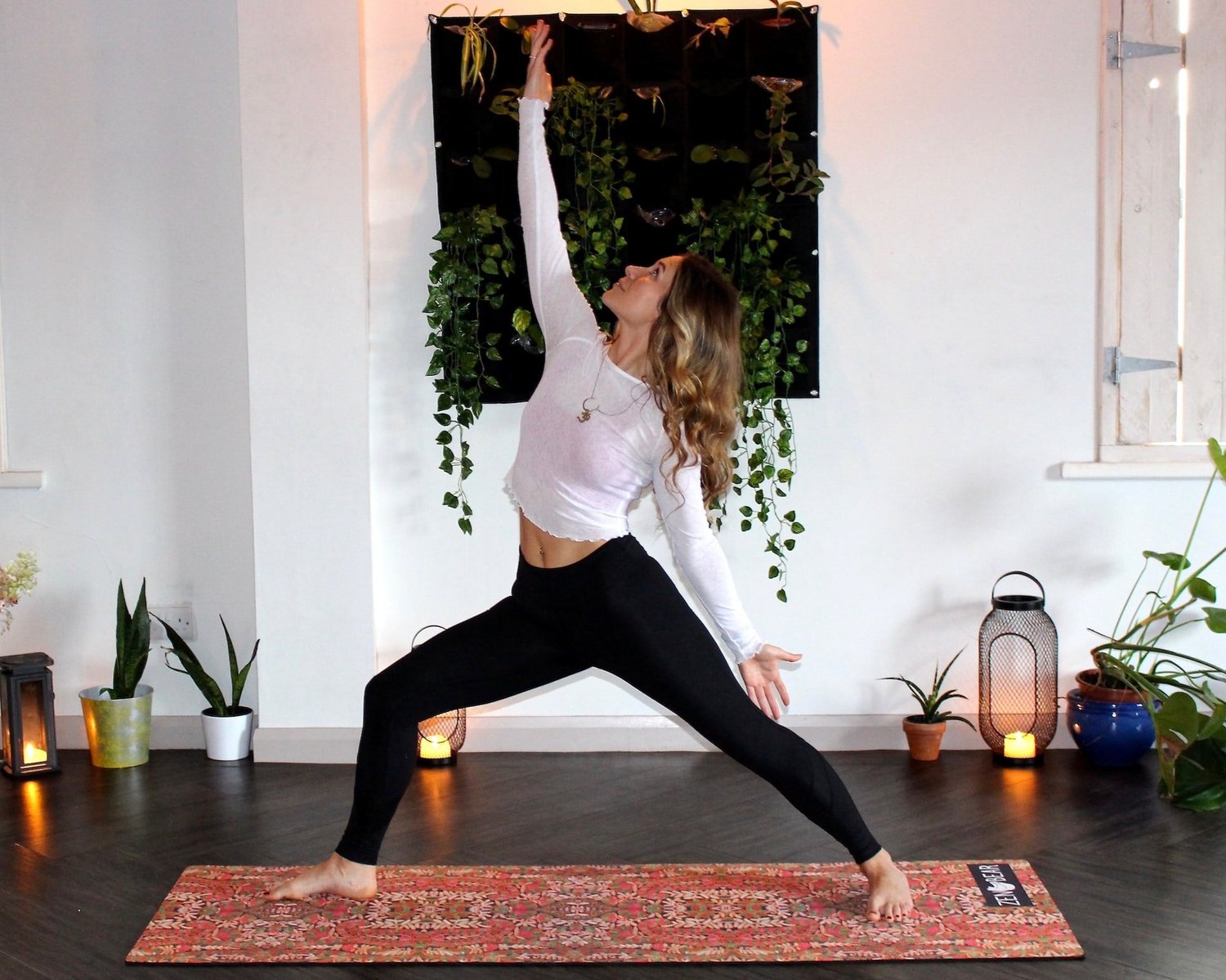Turn Your Fitness Routine Into a Balancing Act

Losing your balance may not be something you are actively thinking about when it comes to aging and menopause. However, a new study showed that for people over 50, an inability to stand on one leg for 10 seconds in later life is linked to nearly double the risk of death from any cause within the next decade.
Balance starts to decline in our 50’s and then declines rather rapidly. Many factors can affect balance, including sudden changes in blood pressure, medications, low blood sugar, and low iron levels. The good news is that balance can easily be improved by incorporating balance exercises into a regular fitness routine or practicing balance-focused workouts.
Why Is Balance So Important in Midlife?
Balance can reduce the risk of falls that can cause injury to your joints, tendons, and ligaments. When you feel off balance, your body will naturally jerk to stop yourself from falling (hopefully), and that’s where injuries to these body parts can occur as well as a fall itself. For menopausal women, the joints, tendons, and ligaments are already compromised because of low estrogen levels, which affects the hydration and lubrication of joint tissues, including ligaments and tendons.
Good balance will also require you to engage more muscles during a workout making the exercises more effective and efficient. If you can’t balance while doing a one-legged deadlift, for example, you’re not going to get much out of the exercise. Being able to keep your balance requires a more significant amount of energy which means better results from your workouts.
How To Assess Your Balance
Everyone loses their balance now and then, and that’s a normal part of life. But if you feel like it’s been a more significant problem lately or simply want to test yourself, there are easy tests you can take to assess your balance.
- The Berg Balance Scale is a very popular tool to test balance. There are 14 tasks you have to perform, and each one is graded on a scale of 0-4 (four being the best). Once you add up the scores for each task, you will know if you are at a minimum, moderate or maximum risk for a fall. The lower the score, the greater your risk of a fall.
- Another simple way to test your balance is to stand with both feet together and close your eyes. Count to 30 and notice if you start swaying during that time, have to step out of the stance, or can’t make it to 30 seconds.
- You can also stand on one leg for 10 seconds. Be sure to do this next to a sturdy surface or chair in case you lose your balance and need to grab onto something.
- Place one foot directly in front of the other (the heel of one foot should be touching the toes of the other). Again, close your eyes, count to 30, and notice if you are swaying.

Yoga For Better Balance
It is never too late to work on your balance, regardless of age or fitness level. Of course, it’s better to start earlier than later.
Yoga is particularly beneficial for improving balance as the practice requires you to shift your body weight back and forth into various poses and positions. Balance comes from this movement and developing your strength and ability to focus. Standing yoga poses are especially good for building balance and stability. For example, warrior poses, triangle poses, crescent lunge, tree pose, chair poses, and dancer pose. Starting with simple poses works best for most people. You can gradually add more difficult poses as you improve. Challenging yourself will help to train your body to react quickly if you are about to fall. Remember, even highly trained yoga practitioners fall out of balance. Rather than get frustrated when you wobble or fall out of a pose, give yourself grace and try again. You can improve your balance in just a few weeks if you practice consistently.
If yoga is not your thing, tai chi and Pilates are two other forms of exercise that incorporate a lot of balance work into their routines. With Pilates, strengthening your muscles, especially your core, helps with posture, and good posture results in a stronger, more supportive stance that can help you improve your balance and coordination.
If you still have trouble with balance, talk to your doctor and consider physical therapy.
Balance is a crucial part of healthy aging. Don’t wait for a fall or until you’re older and postmenopausal to start working on your balance. It’s ideal to start paying attention to balance in your 40’s. Even if you are not experiencing any issues and can hold a balancing pose for 10-30 seconds, it’s still a good idea to incorporate different balance exercises into your routine a few times a week, whether at home or in the gym.
Looking for more expert tips on menopause and healthy aging? Download Midday from the App Store or visit us at Midday.Health.
Ilyse Rogozenski has been an AFAA-certified fitness instructor for more than nineteen years. She specializes in conditioning classes that combine both cardiovascular and strength exercises. Ilyse has worked with all age groups and fitness levels and believes that fitness should be challenging, but fun. She helps women stay consistent with their fitness programs while also creating a sense of community in all of her classes.
Sign up for more unique women’s health content
By submitting this form, you agree to the Lisa Health Privacy Policy and Terms of Use

